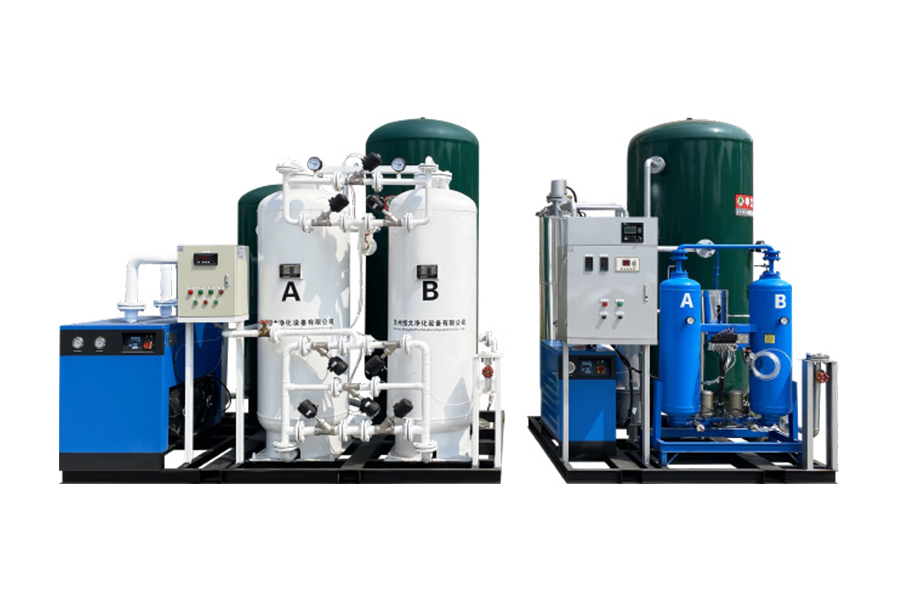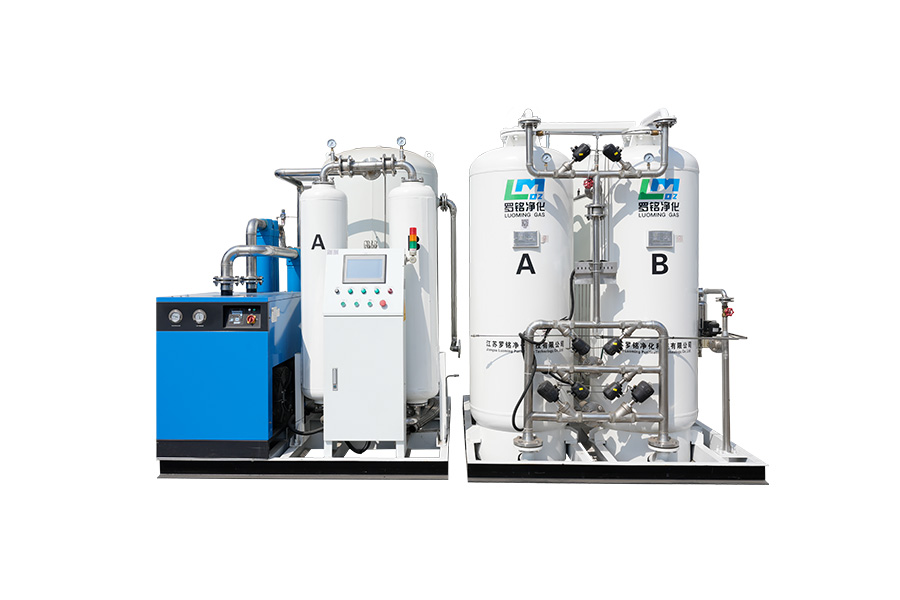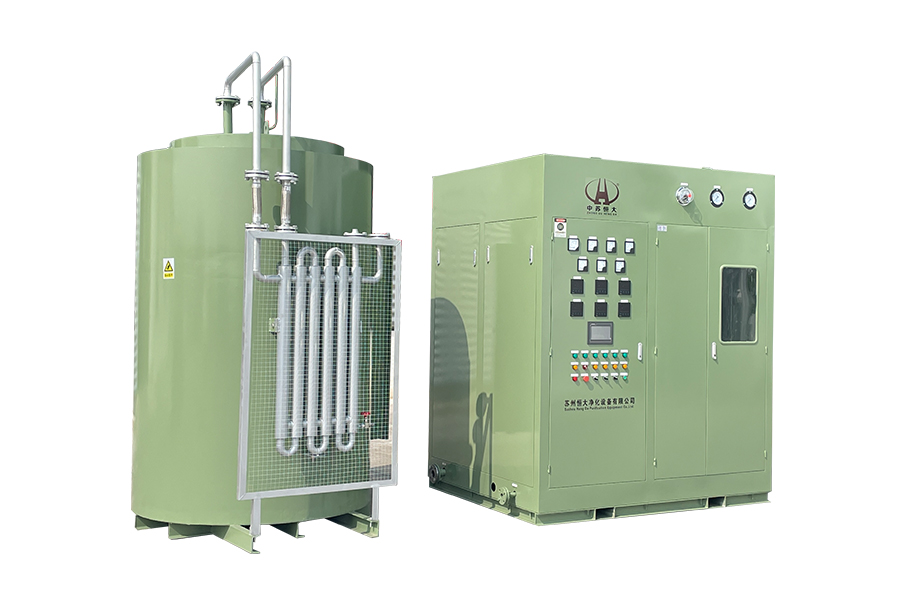In the modern industrial landscape, the demand for reliable oxygen supply is critical. Nowhere is this more evident than in the metal cutting and welding industries, where oxygen serves as both a fuel enhancer and a process gas. Traditionally, industries relied on high-pressure oxygen cylinders or liquid oxygen tanks delivered by suppliers. However, this model comes with high recurring costs, supply interruptions, and logistical challenges.
The emergence of on-site oxygen generators has transformed the way manufacturers source oxygen—offering a safer, more efficient, and cost-effective alternative.
1. Understanding the Role of Oxygen in Metal Cutting and Welding
Oxygen plays multiple roles in metalworking processes. In cutting and welding, its main function is to support combustion and create an intense flame capable of melting or oxidizing metals.
- In cutting applications, such as oxy-fuel cutting, a torch mixes oxygen with a fuel gas (like acetylene, propane, or natural gas). The high-pressure oxygen jet oxidizes the heated metal, producing iron oxide (slag) that is blown away to form a clean cut.
- In welding, oxygen supports the combustion of fuel gases, producing a stable and concentrated flame that can melt the edges of metal parts for joining.
These operations require a steady, pure, and pressurized oxygen supply. Any fluctuations in oxygen purity or pressure can compromise cut quality, welding precision, and fuel efficiency.
2. What Is an Oxygen Generator?
An oxygen generators are an on-site gas production system that extracts oxygen directly from ambient air using advanced separation technologies. The most common types are Pressure Swing Adsorption (PSA) and Vacuum Pressure Swing Adsorption (VPSA) systems.
2.1 Working Principle (PSA Technology)
PSA oxygen generators operate on a simple yet highly efficient principle:
- Ambient air is drawn into the system through filters and compressed.
- The compressed air passes through molecular sieve beds made of zeolite, which selectively adsorbs nitrogen molecules while allowing oxygen to pass.
- The result is a continuous stream of oxygen gas with a purity typically between 90% and 95%.
- The process alternates between twin adsorption towers, ensuring uninterrupted oxygen flow.
This technology eliminates the need for external deliveries or refilling cylinders. Oxygen is produced on demand, directly at the site of use.
3. Applications of Oxygen Generators in Metal Cutting and Welding
3.1 Oxy-Fuel Cutting
Oxy-fuel cutting is one of the oldest and most common methods used for carbon steel and ferrous metals. It requires oxygen of at least 99.5% purity for clean cuts. While traditional PSA systems produce slightly lower purity, modern systems can achieve up to 95% or higher, which is suitable for most cutting applications, especially when combined with efficient fuel gases like propane or natural gas.
Oxygen generators supply the oxygen used both in preheating flames and in the cutting jet, ensuring consistent flame performance and reducing variations that could affect cut edge quality.
3.2 Flame Welding
In oxy-acetylene welding, oxygen is mixed with acetylene to produce a high-temperature flame (up to 3,500°C). The purity and flow rate of oxygen determine the flame characteristics—neutral, oxidizing, or carburizing—affecting the weld bead and metallurgical properties. On-site generators provide steady oxygen pressure, enabling welders to maintain precise control over flame intensity and temperature.
3.3 Metal Heating and Brazing
Oxygen is also used in preheating and brazing operations, where metal surfaces are heated before joining or coating. Oxygen generators supply the gas required for these heating torches continuously, without waiting for cylinder replacements.
3.4 Plasma Cutting and Laser Support
While plasma and laser systems primarily use compressed air or nitrogen, oxygen is still employed as an assist gas to enhance cutting quality on carbon steels. On-site oxygen generators provide a reliable backup or supplementary supply for these high-tech systems, improving flexibility and lowering gas expenses.
4. Advantages of Using Oxygen Generators in Metal Fabrication Facilities
4.1 Cost Efficiency
The most compelling reason companies switch to oxygen generators is cost. Purchasing oxygen cylinders or liquid oxygen can be expensive due to transportation, rental, and refilling fees. By generating oxygen on-site, facilities reduce operating costs by up to 50–70%, depending on usage volume. After the initial investment, the only ongoing expenses are electricity and routine maintenance.
4.2 Continuous Oxygen Supply
Oxygen generators provide uninterrupted production—a crucial advantage for fabrication shops running multiple shifts. Operators no longer need to wait for gas deliveries or interrupt work to change cylinders. This ensures stable flame performance and eliminates downtime.
4.3 Safety Enhancement
Handling high-pressure oxygen cylinders involves risks such as leakage, explosion, or improper storage. On-site oxygen generation operates at safer, lower pressures and produces gas only as needed. This significantly reduces storage hazards and improves workplace safety.
4.4 Consistent Purity and Pressure
In cutting and welding, oxygen consistency matters. Cylinder pressure declines as gas is used, which can affect flame behavior. Oxygen generators maintain constant pressure and purity throughout operation, leading to uniform cut edges, stable flames, and predictable welding results.
4.5 Environmental and Logistical Benefits
By eliminating the need for cylinder deliveries, oxygen generators reduce carbon emissions associated with transportation and decrease overall environmental impact. Moreover, facilities save valuable floor space previously used for cylinder storage.
4.6 Easy Integration
Modern oxygen generators are modular and compact. They can be installed close to the point of use—either connected directly to cutting or welding stations or integrated into an existing pipeline system. Most units come with digital controls, automatic monitoring, and remote alarms for purity and pressure deviations.

5. Installation and Operational Considerations
When implementing an oxygen generator system in a metal fabrication facility, several factors should be carefully planned.
5.1 Oxygen Demand Assessment
Before installation, it’s essential to calculate the total oxygen demand based on the number of cutting torches, welding stations, or other oxygen-consuming equipment. This determines the generator’s required flow capacity and tank size.
5.2 Space and Ventilation
Although oxygen generators are compact, they require adequate space for air intake and maintenance access. Good ventilation is crucial to prevent accumulation of oxygen-enriched air, which could pose a fire risk.
5.3 Electrical and Air Supply
Oxygen generators depend on compressed air. Therefore, a reliable air compressor and dryer system must be part of the setup. Clean, dry air extends the lifespan of the molecular sieves and ensures stable oxygen quality.
5.4 Safety Measures
Proper grounding, leak detection, and adherence to industrial gas safety codes are essential. The system should also include pressure relief valves and automatic shutdowns in case of power failure or abnormal pressure buildup.
5.5 Maintenance
Routine maintenance includes cleaning filters, checking valves, and occasionally replacing molecular sieve materials (typically every 3–5 years). Modern units come with automatic diagnostic functions, making maintenance simpler and more predictable.
6. Economic and Operational Impact
6.1 Case Study Example
A medium-sized metal fabrication workshop that consumed approximately 200 oxygen cylinders per month switched to a PSA oxygen generator system. Within six months, the company reported:
- A 60% reduction in oxygen-related costs,
- Elimination of supply interruptions, and
- A safer working environment due to reduced cylinder handling.
This illustrates how on-site oxygen generation can deliver both immediate and long-term operational advantages.
6.2 Return on Investment (ROI)
The payback period for most industrial oxygen generator systems is typically less than two years, depending on usage. For high-consumption facilities, ROI can occur even sooner due to substantial savings in logistics and procurement.
7. Comparing Oxygen Generators to Traditional Oxygen Supply Methods
| Feature |
On-Site Oxygen Generator |
Cylinder Supply |
Liquid Oxygen Tank |
| Purity |
90–95% |
99.5% |
99.9% |
| Supply Continuity |
Continuous |
Requires replacement |
Continuous (depends on delivery) |
| Safety |
Low-pressure, on-demand |
High-pressure storage |
Cryogenic hazards |
| Cost Over Time |
Low operating cost |
High recurring cost |
Moderate recurring cost |
| Logistics |
Minimal |
Delivery-dependent |
Delivery-dependent |
| Space Requirement |
Compact |
Requires storage area |
Large tank setup |
While cylinders and cryogenic tanks still serve certain high-purity applications, most metal cutting and welding operations find that PSA oxygen generators provide a perfect balance between performance and economy.
8. Future Trends and Technological Developments
The evolution of oxygen generation technology continues to improve efficiency and purity. New-generation PSA systems offer:
- Higher oxygen purity (up to 99%) suitable for demanding processes.
- Smart monitoring systems with IoT connectivity for real-time data tracking.
- Energy-saving compressors and advanced control algorithms to reduce electricity consumption.
As sustainability and operational independence become priorities for manufacturers, the adoption of on-site oxygen generators is expected to grow steadily across the metal fabrication sector.
9. Conclusion
Oxygen is the lifeblood of metal cutting and welding operations. Without it, flames cannot reach the necessary intensity to cut or fuse metals effectively. For decades, industries have depended on oxygen cylinders and bulk deliveries to meet this need—but those methods are increasingly giving way to on-site oxygen generation.
Oxygen generators provide a steady, safe, and cost-efficient gas supply directly from the air. They eliminate the unpredictability of deliveries, reduce operational costs, and improve workplace safety. Whether for oxy-fuel cutting, flame welding, brazing, or preheating, these systems ensure consistent performance and energy efficiency.
In essence, oxygen generators are not just equipment—they are strategic assets that enhance productivity, stability, and competitiveness in the metal fabrication and welding industries.




 English
English русский
русский Français
Français Español
Español عربى
عربى



